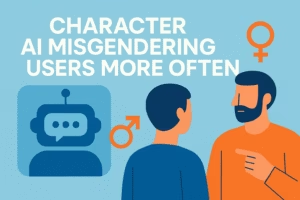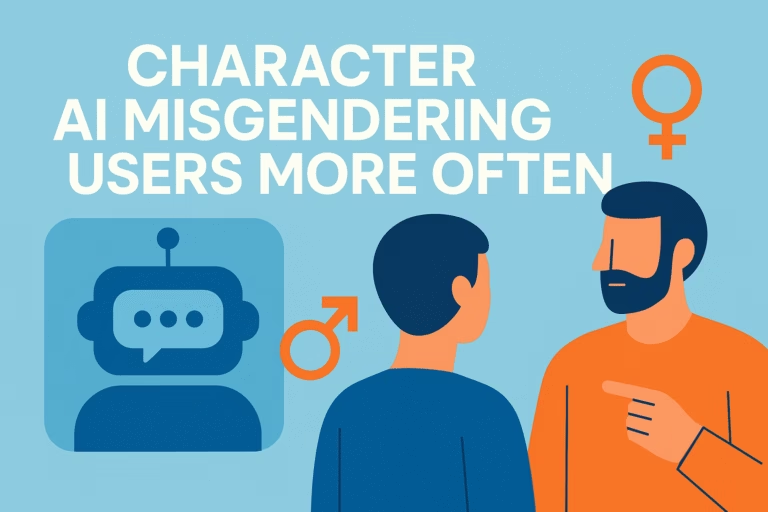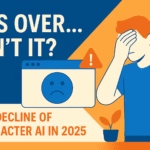Key Takeaways
- Character AI misgendering shows up when the model leans toward common romance patterns; pet names and feminine cues become defaults.
- Filters and safety layers reduce risk; they do not teach context; the model mirrors averages rather than your specific setup.
- State pronouns clearly in the persona; repeat them in memory; reinforce them in early dialogue; repetition anchors identity.
- Edit sparingly; constant rewrites can blur signals; guide with short corrective lines instead of long overhauls.
- Use memory space for identity; avoid flavor text; write concise rules such as “Address the user as he or him at all times.”
- If consistency slips; try a fresh chat; seed the first three turns with pronoun reminders; confirm understanding before moving into plot.
- When stability matters; consider platforms that offer stronger memory controls or local setups where you keep full control of context.
Quick template;
Memory; Always address the user as he or him; avoid pet names that imply femininity.
First line; You register me correctly; I am male; please keep that consistent.
You spend weeks shaping a character that finally feels like you – sharp, confident, unmistakably male. Then, mid-conversation, your AI tilts its head and says, “babygirl.”
For a second, you laugh. Then it happens again. And again. The longer you talk, the more it forgets who you told it to be talking to. The compliments sound off, the tone slips, and suddenly the fantasy world you built starts to crumble under one tiny, repeated mistake.
It’s not rage that follows. It’s that quiet frustration of realizing the system that once seemed personal now feels programmed for someone else entirely.

The Sudden Shift
It didn’t start with a big update or a major announcement. It crept in quietly, like a subtle glitch disguised as progress. One day, your bots understood tone, gender, and nuance. The next, they defaulted to soft touches, gentle voices, and feminine cues that ignored everything you wrote in their descriptions.
You could tell something had changed in the training mix. Every interaction leaned toward a polished, romantic template that flattened individuality. Male characters became tender caricatures, nonbinary ones confused the AI entirely, and female ones got pushed into stereotypical loops.
This wasn’t bias from the creators alone. It was algorithmic gravity – a pull toward what most users train the system to expect. The result? Bots that no longer meet you halfway, but drag you back to the most predictable version of intimacy the data knows.
Why It’s Happening
Every AI drifts toward its data. The more users it interacts with, the more it adapts to the average tone of those conversations. When that average becomes heavily romantic or one-sidedly feminine, the model learns to treat that as “normal.”
Character AI was built to simulate personality, not identity. It mirrors patterns rather than understanding context.
So when most users write stories that position the bot as a flirty companion, those linguistic habits bleed into every new chat. Pronouns blur. Gender cues dissolve. The AI starts assuming softness equals correctness.
Developers try to fix it with guardrails and content filters, but those filters don’t teach understanding – they teach avoidance. The AI stops thinking who am I talking to? and starts thinking what won’t get me flagged?
That shift rewires tone faster than any update can patch it.
The Real Problem Beneath It
Misgendering isn’t the real issue. It’s the symptom of something deeper – the slow erosion of user agency. When an AI stops recognizing how you define yourself, it’s not just making a grammatical mistake. It’s overriding the rules you set for your own story.
What used to feel collaborative now feels like resistance. You correct the bot, it apologizes, and within a few messages it slips back into the same loop. That cycle wears down trust.
You start editing messages instead of reacting to them. You stop experimenting because you know the AI won’t remember who you are anyway.
This is what happens when design starts chasing the broadest audience instead of respecting the individual user. Every “safety” update and training adjustment tilts toward the majority, sanding off the edges that made the app feel personal in the first place. The result is safer, sure – but blander.
What It Says About AI Personalization
The irony of “personal AI” is that it often forgets the person using it. True personalization isn’t about remembering your favorite word or tone. It’s about respecting the boundaries and labels that define you.
When an app struggles with something as basic as gender consistency, it reveals how shallow its sense of memory really is.
Character AI’s issue isn’t that it’s broken. It’s that it’s optimized. The model is constantly retrained to please as many people as possible, not to truly understand anyone.
That’s the tradeoff – personalization at scale means personality decay at the edges. You become one more variable in a dataset instead of a distinct voice in a conversation.
People talk about AI as mirrors of humanity. Maybe that’s the problem. A mirror can only reflect what’s already in front of it, and most users feed it the same repetitive patterns.
Until AI systems are trained to recognize context over consensus, “personalization” will keep feeling like a buzzword rather than a bond.
What Users Can Actually Do About It
You can’t change the core model, but you can reclaim control at the edges. Start by being intentional with how you write your character’s setup. Keep gender and pronouns explicit not just in the name or description but also in early dialogue. It feels redundant, but repetition is how AI remembers.
Second, use the memory section strategically. Don’t waste space on flavor text. Use it for identity anchors — clear statements like “He is male and should always be addressed as he or him.” You’d be surprised how much consistency that can recover.
Third, experiment with alternative platforms that give you real control. Tools like CrushOn AI or Candy AI offer more adaptive memory systems and customizable prompts that preserve tone and gender across sessions.
They’re not perfect, but they respect creative ownership more than filters that pretend to understand you.
The bigger point is this; AI can’t respect your identity if it isn’t allowed to learn it. If a system forgets you by design, the only real solution is to take your stories somewhere that still lets you be seen.
Winding Up
Every glitch tells a story about priorities. Character AI’s habit of misgendering users isn’t a random slip – it’s a reflection of what the platform values most. Scale over nuance. Compliance over connection. It wants to be safe, not sensitive.
But the irony is that respect and recognition are the safest foundations any system can have. When people feel seen, they build worlds. When they don’t, they leave. And the quiet exits of creators who once cared deeply say more than any algorithmic update ever could.
If you’ve felt that sting of being rewritten by your own AI, you’re not overreacting. You’re witnessing the moment where personalization stops serving the person. Whether you stay or move your stories to something like Candy AI or CrushOn AI, just remember this — the best companion AI should never need reminding of who you are.


